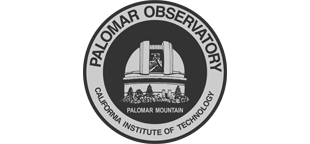PSM2018 Participants
Caltech Campus Sessions
#
Name
Affiliation
Contribution
Title/Topic (mouse hover for abstract)
1
Philip Appleton
IPAC
talk
2
Lee Armus
IPAC
none
3
Charles Bailyn
Yale
none
4
Tom Barlow
Caltech
none
5
Mike Bertin
Docent
invited talk
6
Nadia Blagorodnova
Caltech
talk
7
Andy Boden
Caltech
none
8
Robert Brucato
Caltech
none
9
Geoffrey Bryden
JPL
none
10
Rick Burruss
Staff
none
11
David Ciardi
IPAC
invited talk
12
Judy Cohen
Caltech
talk
13
Yotam Cohen
Yale
talk
14
David Cook
Caltech
talk
15
Roc Cutri
IPAC
none
16
Y.Sophia Dai
NAOC
talk
17
George Djorogvski
Caltech
invited talk
18
Dmitry Duev
Caltech
none
19
John Dunnicliff
Friend
none
20
Sergio Fajardo-Acosta
IPAC
poster
21
Steven Flanders
Staff
none
22
Christoffer Fremling
Caltech
talk
23
Dawn Gelino
IPAC
none
24
Rose Gibson
AMNH/Columbia
none
25
Zach Golkhou
UW
none
26
Gregg Hallinan
Caltech
none
27
Lynne Hillenbrand
Caltech
none
28
Anna Ho
Caltech
talk
29
Jacob Jencson
Caltech
talk
30
Evan Kirby
Caltech
invited talk
31
Shri Kulkarni
Caltech
none
32
Briley Lewis
AMNH/Columbia
none
33
Isabel Lipartito
University of California, Santa Barbara
poster
34
Patrick Lowrance
IPAC
none
35
Ashish Mahabal
Caltech
talk
36
Joe Masiero
JPL
talk
37
Bob Massey
Caltech
none
38
Matt Matuszewski
Caltech
talk
39
Dimitri Mawet
Caltech
invited talk
40
Lance McCartney
Docent
none
41
Annie Mejía
Affiliate
none
42
Tiffany Meshkat
IPAC
talk
43
Jennifer Milburn
Caltech
talk
44
Jean Mueller
Affiliate
none
45
Paul Nied
Staff
none
46
Ricky Nilsson
Caltech
none
47
Rebecca Oppenheimer
AMNH
none
48
Joel Pearman
Staff
none
49
Jacklyn Pezzato
Caltech
none
50
Sterl Phinney
Caltech
invited talk
51
Meredith Powell
Yale
talk
52
Tom Prince
Caltech
none
53
Michael Ressler
JPL
talk
54
Reed Riddle
Caltech
talk
55
Maureen Salmi
Docent
none
56
Frank Santore
Docent
none
57
Patrick Shopbell
Caltech
none
58
Roger Smith
Caltech
talk
59
Tom Soifer
Caltech
talk
60
Luming Sun
USTC
talk
61
Samaporn Tinyanont
Caltech
talk
62
Gautam Vasisht
JPL
talk
63
Shreyas Vissapragada
Caltech
poster
64
Richard Walters
Caltech
none
65
Jian-Min Wang
IHEP
talk
66
Songhu Wang
Yale
invited talk
67
Roger Weber
Docent
none
68
Michael Werner
JPL
talk
69
Dorothy Wood
Docent
none
70
Xue-Bing Wu
NAOC
invited talk
71
Cong Xu
NAOC
none
72
Suijian Xue
NAOC
none
73
Lin Yan
Caltech
invited talk
74
Quan-Zhi Ye
IPAC
talk
75
Jonas Zmuidzinas
Caltech
none
Palomar Observatory Session
#
Name
Affiliation
Seats
1
Philip Appleton
IPAC
1 2
Lee Armus
IPAC
1 3
Charles Bailyn
Yale
1 4
John Baker
Caltech
1 5
Mike Bertin
Docent
2 6
Nadia Blagorodnova
Caltech
1 7
Andy Boden
Caltech
1 8
Robert Brucato
Caltech
2 9
Rick Burruss
Staff
2 10
David Ciardi
IPAC
1 11
Judy Cohen
Caltech
2 12
Brad Cowan
Staff
2 13
George Djorogvski
Caltech
1 14
Dmitry Duev
Caltech
1 15
John Dunnicliff
Friend
1 16
Steven Flanders
Staff
1 17
Christoffer Fremling
Caltech
2 18
Rose Gibson
AMNH/Columbia
1 19
Zach Golkhou
UW
2 20
Larry Groupé
Friend
2 21
Carolyn Heffner
Staff
1 22
Anna Ho
Caltech
1 23
Roger Hurt
Friend
1 24
Jon Knapp
Staff
1 25
Shri Kulkarni
Caltech
2 26
Cynthia Lucia
Staff
2 27
Ashish Mahabal
Caltech
2 28
Bob Massey
Caltech
1 29
Dimitri Mawet
Caltech
1 30
Lance McCartney
Docent
2 31
Annie Mejía
Affiliate
1 32
Ronald Michal
Friend
2 33
Jennifer Milburn
Caltech
1 34
Jean Mueller
Affiliate
1 35
Paul Nied
Staff
1 36
Rebecca Oppenheimer
AMNH
1 37
Joel Pearman
Staff
2 38
Sterl Phinney
Caltech
2 39
Reed Riddle
Caltech
2 40
Maureen Salmi
Docent
1 41
Frank Santore
Docent
1 42
Kinchen Searcy
Docent
2 43
James Searcy
Docent
1 44
Tom Soifer
Caltech
2 45
Pam Thompson
Staff
1 46
Mark Thompson
Staff
1 47
Anne Vaughan
Caltech
1 48
Richard Walters
Caltech
2 49
Songhu Wang
Yale
1 50
Jian-Min Wang
IHEP
1 51
Michael Warrener
Yale
1 52
Dorothy Wood
Docent
2 53
Xue-Bing Wu
NAOC
1 54
Suijian Xue
NAOC
1 55
Lin Yan
Caltech
1 56
Jonas Zmuidzinas
Caltech
2
Questions? We've answered many common visiting, media, and academic questions in our public FAQ page .COO Feedback portal.

